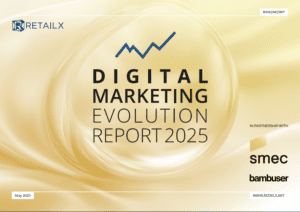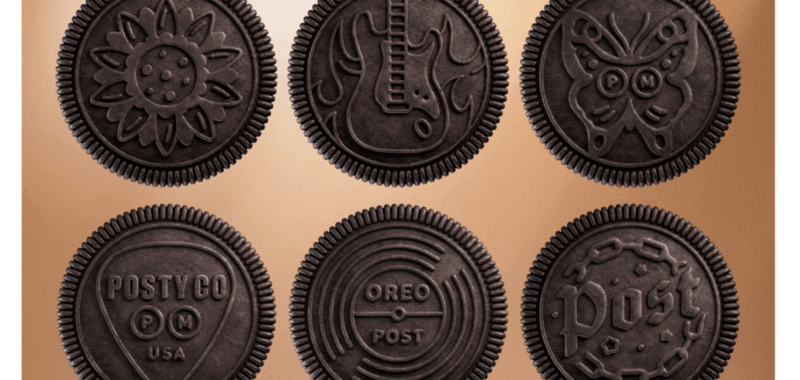For certain kinds of big brands, it’s important to find strategic partners that have a cultural recognition factor, Hamish Stacy, senior manager and US OREO consumer data lead, tells the brand new RetailX Digital Marketing Evolution 2025 Report.
Two cocoa biscuits and a white sweet filling. First introduced to the market in 1912, there’s nothing too complicated about an OREO Cookie. Indeed, its simplicity, the fact that an OREO is so instantly recognisable, is arguably one of the brand’s biggest strengths. That doesn’t make the cookies any less of a treat, so much so that Mondelēz International sells more than 60bn OREO Cookies every year, with around 20bn of these being sold in the USA.
If it’s tempting to think that such a strong brand doesn’t really need much marketing, it may be instructive to pay a visit to London’s Museum of Brands. Here, the exhibits include many products that once enjoyed huge consumer recognition, but fell out of favour. Keeping a brand in the forefront of consumer minds requires constant work.
With annual revenues of $26.5bn, Mondelēz International has the financial muscle to do this. One of the main ways it does so is by working with partners that also have consumer recognition. In 2019, for example, to tie in with the final season of Game Of Thrones, the company released an OREO special edition featuring cookies embossed with crests of the show’s warring factions. There was an OREO version of the show’s opening titles and Mondelēz promoted the hashtag #GameofCookies. Saturday Night Live mentioned the campaign, the kind of publicity that can only be found by leveraging both marketing expertise and cultural capital.
How does this kind of campaign work? One man who knows better than most is Hamish Stacy, senior manager and US OREO consumer data lead. “Part of our brand ethos is to position OREO at the centre of culture,” he says. To understand where this sweet spot is located, Mondelēz conducts consumer research into its target markets. As with many mature brands, it sees growth opportunities as sitting within the Gen Z demographic. The company wants to build recognition and loyalty in this demographic. This is research aimed at finding out “which [other] brands are resonating with consumers in that cultural space”. Once these brands have been identified, “Then we look at the ability to share our brand ethos together to unlock value and really surprise and delight consumers.”
With so much brand equity on the line for both parties, this is typically not a speedy process. Even once an opportunity has been identified, says Stacy, it can take two years to bring a project to fruition. These are multi-million dollar opportunities that require “an eyewatering amount of decision making and planning”.
In part, this is simply a matter of working out the finances, but there are further complexities in terms of working with different kinds of partners. Working with a Disney-owned IP such as Star Wars, for example, is very different from working with an individual artist, as Mondelēz did earlier this year when rapper Post Malone created an OREO special edition involving a salted caramel and shortbread flavoured swirled creme. What unites all these campaigns is that they generate excitement and a sense of fun.
While the success of such initiatives is dependent on choosing the right partners, it’s important to realise that one reason Mondelēz can maximise the chances of success is because it has been building up its own customer database. “We ask consumers only for a limited amount of information, which correlates with higher opt-in conversion,” says Stacy.
“And do you want a direct relationship with the OREO brand? A direct relationship with the OREO brand means that we can land in your inbox or in your SMS messages.” This softly-softly approach is necessary because consumers are so often cautious of corporates.
This is data that “takes a long time to build up to a sizable scale” and where, without data enrichment, there will be gaps in knowledge. Nevertheless, the OREO database now has seven zeros at the end of it and “year-on-year growth of consumer-informed media impressions is doubling”.
The feedback OREO gets is a big part of understanding when a campaign has landed well. “Your consumers will tell you if you’re getting it right,” says Stacy. “When we run our sweepstakes, consumer promotions, digital experiences, we’re very much looking at key data, KPIs. If your campaigns aren’t working well for you, your cost per lead will be significantly higher. If your campaigns are working well for you, your cost per lead will be lower if you’re presenting the right value exchanges to consumers. Your conversion rate on your promotions will be higher than if you don’t have compelling value exchanges.”
To look at that another way, when partnerships work it shows in the numbers.

This brand new report was launched at RetailX Event’s Spring Festival earlier this week. It explores how marketers can continue to build meaningful relationships with customers despite changes in legislation. At the same time, consumers hold unprecedented power, not only because of price transparency enabled by digital tools, but also due to their influence on social media, which can make or break the reputation of brands and retailers in an instant.
Stay informed
Our editor carefully curates two newsletters a week filled with up-to-date news, analysis and research, click here to subscribe to the FREE newsletter sent straight to your inbox and why not follow us on LinkedIn to receive the latest updates on our research and analysis.

